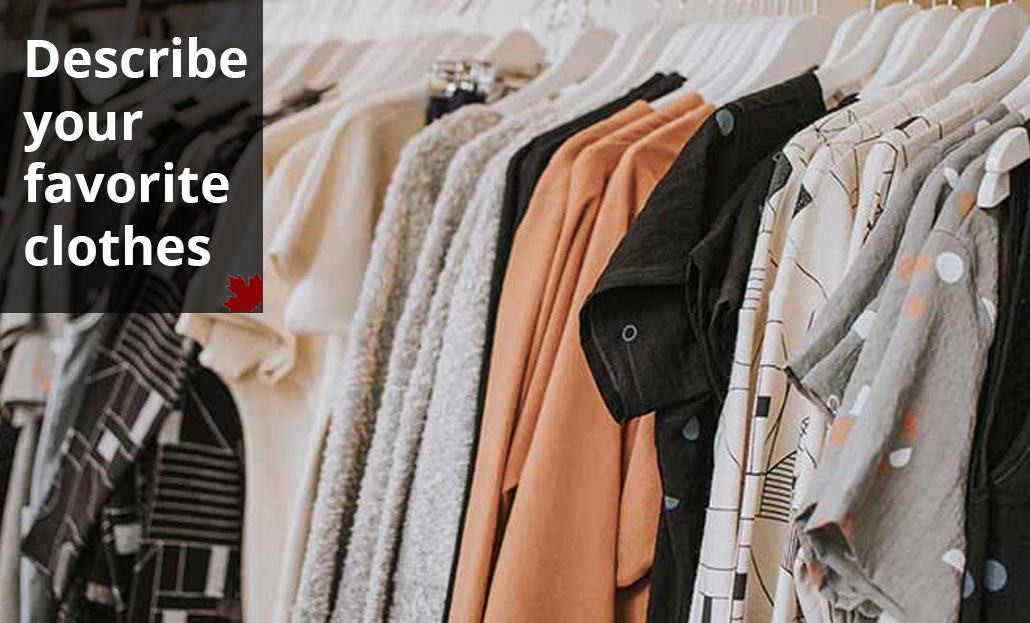You should say
-What is it like?
-Who gave it to you or where you bought it?
-How often do you wear it?
-Explain how you feel about it or why you enjoy wearing it?
Model Answer
Introduction
- I am a lover of clothes and as a result, own many clothes.
- I often buy clothes even when I don’t need them.
- But out of all my clothes,
- There is one I love the most and I don’t wear it often
What is it?
- It is a black long gown
- It fits from the top but has a flare at the bottom.
- At the top, there is a veil covering the arm.
- The length is just below my ankle.
- It’s a simple sophisticated gown.
Who gave it to you or where you bought it?
- It was given to me by my Mum for father and daughter dance in my school.
- She replaced the one I originally got after she accidentally stained it.
- The gown had a sentimental value.
- Because it would be the first dinner gown she gave me.
- Considering she used to buy my clothes
- And it was the exact same replica of her wedding gown.
- Just with a change of color.
How often do you wear it?
- I wear it for special occasions,
- Because it is special to me
- And I don’t want it to fade out or lose its value
- I also would love to pass it down to my children when I have them.
Explain why you enjoy wearing it?
- I enjoy wearing it because of its sentimental value
- And also because it brings out my fits me perfectly
- It is as if it was sown to my skin.
Conclusion:
Clothes are a daily necessity, you can’t live without them.
Part-3 : Follow up Questions @Smart Alpine Education
Ques 1: What is the difference between the dressing style of young people and that of old people?
Young people are more concerned with personal looks and fashion, and have more willingness to spend money on looking good. Women’s shoes are a great example.
Older people are often more concerned with practical matters, such as comfort and durability, and suitability for purpose. When you have a family to support, your priority is not spending money on trends.
Ques 2: Do the people living in the north part of your country wear different clothes as compared to the people living in the south?
Yes they do, In the north part of India women traditionally wear salwar kameez, ghagra choli, sari, and phiran. Dupatta is worn to complete the outfit. Men traditionally wear kurta, achkan, kameez, and sherwani for upper garment, the lower garment includes dhoti, churidar, shalwar, and Lungi.
But in the south part of India, it is hot and humid, so light holiday fabrics are best, though jumpers, jackets, and jeans are useful in hill stations, which can get surprisingly cold. A good brimmed or sun hat works wonders. Some smarter South Indian bars/restaurants/clubs have strict dress codes – e.g. no sandals or shorts at most upmarket urban places.
Ques 3: What kinds of clothes do people wear after work?
People love to feel comfortable after an ethical day at work, so anything that will not be free is always out of the picture. So people wear casual clothes that are free and they can do anything with them.
Ques 4: What kind of clothes should people wear at work?
Casual shirts, dress shirts, sweaters, tops, golf-type shirts, and turtlenecks are acceptable attire for work. Most suit jackets or sports jackets are also acceptable attire for the office if they violate none of the office guidelines
Ques 5: Do you think students need to wear school uniforms?
Yes, students should be identified with a particular school in case of any emergencies. And so they won’t over-dress or dress inappropriately.
Ques 6: Where do Indian people buy clothes?
Indian people buy clothes to wear for different functions. It can be work clothes, party clothes, wedding clothes or just casual clothes that they can wear out to have fun or just wear at home.

